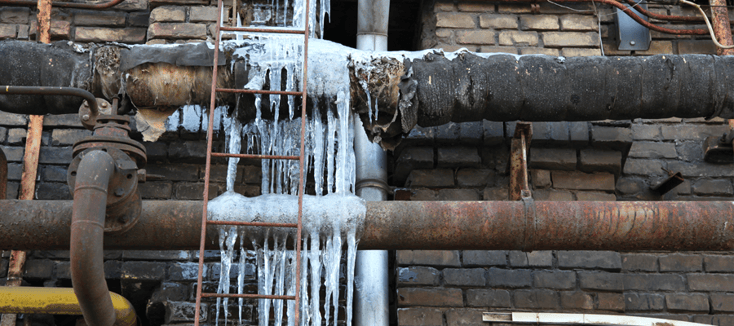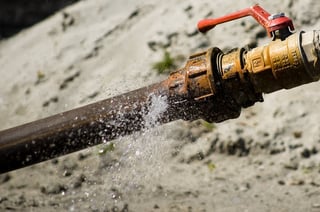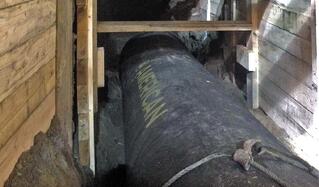Frost Heaves: Replacing Old Pipe That's Been Damaged
- Home
- Team EJP Blog
- Frost Heaves: Replacing Old Pipe That's Been Damaged
- Jan 26, 2016 12:39:14 PM
- Everett J. Prescott

When you're in the waterworks business, you expect to have problems with a wide range of environmental conditions, from settling and shifting base soil to earthquake subsidence to problems caused by extreme temperatures. One particular concern during the winter months, especially in the northern climates, are frost heaves. Frost heaves can leave you with serious damage to your distribution network, even if your pipelines going through that zone never froze themselves. Here is more information on what frost heaves are, the kind of damage they can do to your pipe network and how to replace older pipes that have been damaged through frost heaves.
What are frost heaves?
When soil freezes, it becomes stronger. Because water expands when it freezes, frozen, damp soil tends to expand compared to the dry surrounding soil. This expansion forces the surrounding soil outward and upward, displacing items in the soil around it, including pipes and utility lines.
What kind of damage can they do?
 Though soil is typically a relatively soft substance, freezing causes it to harden, increasing its strength. This increased strength combined with the expansion of the surrounding soil can turn otherwise soft soil into a hard substance that can displace or squeeze your water lines, often causing damage to connections or lifting and squeezing lengths of pipe.
Though soil is typically a relatively soft substance, freezing causes it to harden, increasing its strength. This increased strength combined with the expansion of the surrounding soil can turn otherwise soft soil into a hard substance that can displace or squeeze your water lines, often causing damage to connections or lifting and squeezing lengths of pipe.
How do you repair or replace damaged lines?
Whatever type of pipe your system uses, be it zinc, ductile iron, plastics or other material, needs to be replaced as soon as possible to reduce or remove leaks and restore service to your customers as quickly as possible. This may require a different type of coupling, pipe, saddle or clamp than has been used in the past. If the pipe that has been damaged is underneath structures or roads, you may want to try pulling the old pipe and using it to draw a new length of pipe through at the same time. Clamps that have broken can often be replaced with clamp or connector types that are intended to be placed quickly or with minimal excavation work, so that you can restore service quickly to your clients.
How do you prevent similar damage in the future?
 Though frost heaves can be difficult to predict, they happen most often in areas of damp soil, such as marshes, soils with a plow pan or hard pan and heavy soils that tend to retain water. By providing proper drainage where possible, you can avoid the circumstances where frost heaves tend to occur. Another preventative measure is ensuring that your system has good integrity, as leaking pipes or connectors provide the water that then forms the frost heaves, causing further damage and leaking. Using flexible couplings, saddles and clamps in your system helps reduce leakage that can contribute to the problem. In some extreme climates, laying foam insulation - either sprayed or in sheet foam - at the bottom of a trench also helps reduce ice heaves, as the ground beneath the pipe is protected from freezing in the first place.
Though frost heaves can be difficult to predict, they happen most often in areas of damp soil, such as marshes, soils with a plow pan or hard pan and heavy soils that tend to retain water. By providing proper drainage where possible, you can avoid the circumstances where frost heaves tend to occur. Another preventative measure is ensuring that your system has good integrity, as leaking pipes or connectors provide the water that then forms the frost heaves, causing further damage and leaking. Using flexible couplings, saddles and clamps in your system helps reduce leakage that can contribute to the problem. In some extreme climates, laying foam insulation - either sprayed or in sheet foam - at the bottom of a trench also helps reduce ice heaves, as the ground beneath the pipe is protected from freezing in the first place.
By being aware of the damage that can be caused by frost heaves and taking steps to prevent problems from happening in the future, you're lowering the risk that your waterworks system faces in the future. If you're not sure what steps should be taken next or which type of piping will be the most resistant to frost heave damage, please feel free to contact us. At Team EJP, we've been helping waterworks department find smart solutions to their problems for over 60 years and are happy to help you find the perfect solution for your situation.








